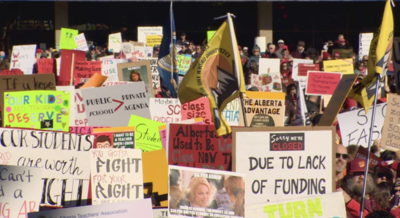Trump’s student visa crackdown: What is wrong with it and why America will pay the price

President Donald Trump’s second-term immigration policies are reshaping American higher education, and with it, the country’s long-term innovation ecosystem. Stricter visa vetting, suspended embassy interviews, and expanded travel restrictions across 19 countries have made the United States a significantly tougher destination for international students. What began as a border-control initiative is now reverberating through research laboratories, startup incubators, and classrooms nationwide, threatening America’s traditional edge in global innovation.
A record drop in international students
Fall 2025 marks the steepest decline in international student arrivals in modern US history. According to the US Department of Commerce, just over 313,000 student visa holders entered the country in August 2025, a 19% decline from nearly 387,000 the previous year.The losses are concentrated in regions that have historically supplied top STEM talent: Asia (-24%), Africa (-32%), and the Middle East (-17%), with India alone experiencing a 44% fall, The New York Times reports. NAFSA: Association of International Educators projects a 15% overall decline in international student enrolment for the 2025-26 academic year — roughly 150,000 fewer students, representing an estimated $7 billion in lost tuition revenue and the equivalent of 60,000 jobs.
Visa chaos and revocations
The numbers reflect more than statistics; they reveal a complex bureaucratic maze. In May 2025, the US Department of State suspended new student visa interviews while requiring international applicants to make their social media accounts public for “security screening.” Days later, travel restrictions were expanded to nationals of 19 countries, including Iran, Ghana, and Nigeria.China, which represents roughly one in four international students in the US, saw hundreds of visas revoked over the summer. Many students had already paid deposits or booked flights. Reuters described them as “helpless” and “anxious,” told only that their visas were void “for security reasons.” Each revoked visa is more than a disrupted education. It is the potential loss of a future researcher, engineer, or entrepreneur.
Universities feel the strain
The impact is evident at elite institutions. Harvard University reports that international students now constitute 15% of its fall 2025 freshman class, down from 18% the previous year, according to The Crimson. Johns Hopkins and Northwestern University have reported double-digit drops in international graduate enrolment in STEM programmes, putting research projects at risk. USC, historically home to one of the largest international undergraduate populations, has pivoted towards domestic recruitment in response to falling applications from China and India.Behind every number is a lost contribution — a PhD candidate who might have advanced robotics, or a student-founder who could have launched the next significant tech venture.
Competitors seize the moment
As the United States tightens its doors, other countries are acting decisively. Canada has raised international-student quotas by 20% and reduced visa wait times. The United Kingdom reinstated a two-year post-study work visa and eased employment rules, while Australia extended work rights for STEM graduates to four years and granted full-time work to dependents. Collectively, these countries have positioned themselves as ‘global education havens,’ ready to absorb the talent America is pushing away.
Economic and innovation costs
Restricting international students may seem to create more opportunities for domestic learners or safeguard sensitive research. Proponents argue that lower international enrolment encourages universities to invest more heavily in domestic students and that tighter screening protects national security.Yet economists warn of the consequences. Michael Lovenheim of Cornell says that such policies disrupt high-growth sectors and weaken GDP. UC Davis economist Giovanni Peri highlights a mounting “talent deficit” in research, while Rutgers professor and former Obama labour economist Jennifer Hunt predicts measurable declines in patents and innovation, Forbes reports.History demonstrates the stakes. Immigrant entrepreneurs and international graduate students have long powered US innovation, founding or leading companies such as Microsoft, Google, and IBM, and contributing consistently to research and patents.
A shrinking pipeline, a growing risk
America’s dominance in science and technology has historically depended on attracting the best minds globally. That model is now under threat. While short-term gains, such as slightly easier admissions for domestic students, may appear attractive, the long-term cost is significant: a shrinking pool of global talent, slower research progress, and a gradual erosion of America’s reputation as the world’s innovation hub.“Talent mobility is the backbone of the American research economy,” says Dr Fanta Aw, CEO of NAFSA. “When we make it harder for bright minds to study here, we give our competitors a gift,” according to Forbes.Those competitors are already benefiting. Universities abroad are establishing joint research programmes once anchored in US institutions, while multinational firms relocate R&D centres to countries with more welcoming immigration policies. The ripple effects may persist for a generation.
The US risks paying a heavy price
If the United States wants to maintain its technological leadership, securing borders alone will not suffice. The future depends on keeping the doors open to the minds that drive progress, innovation, and economic growth. Restrictive visa policies may provide short-term political or administrative gains, but the cost could be far greater.The United States faces a clear choice: To continue closing its doors or to reaffirm the principle that the best minds, regardless of origin, are indispensable to its future.





